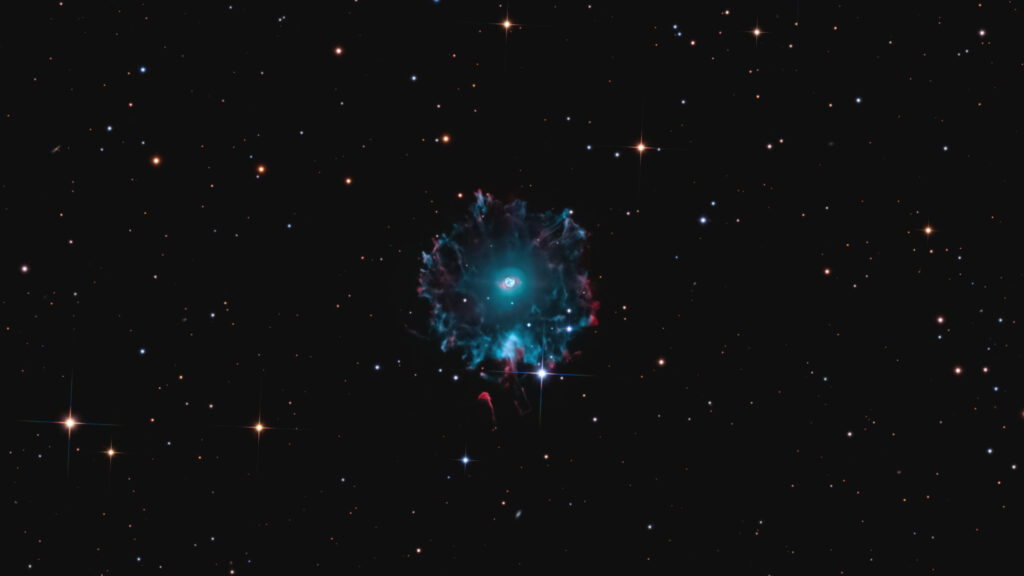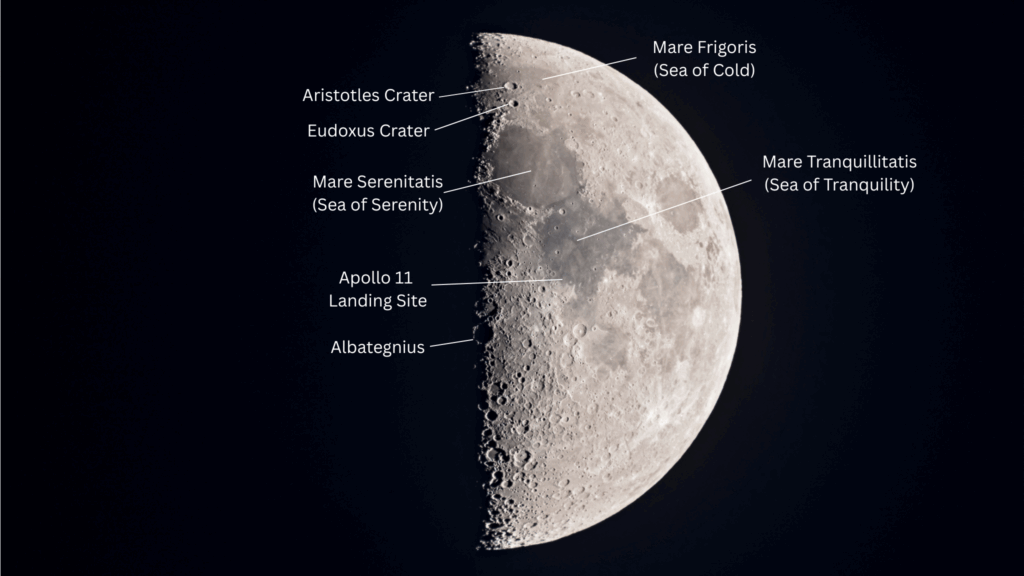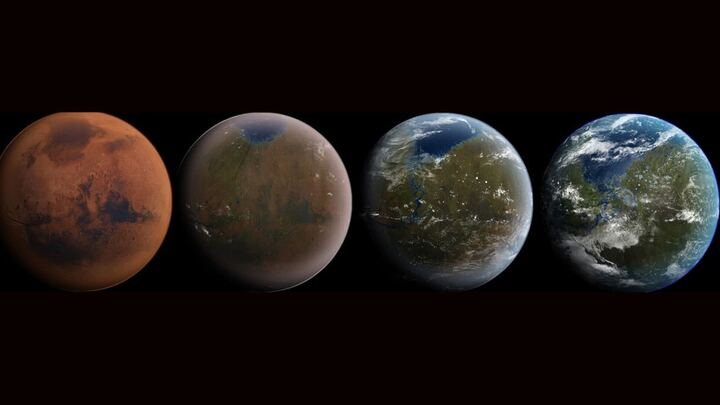Ever since the discovery of Pluto in 1930, kids grew up learning that the solar system has nine planets. That all changed in the late 1990s, when astronomers started arguing about whether Pluto was indeed a planet. In a highly controversial decision, the International Astronomical Union ultimately decided in 2006 to designate Pluto as a “dwarf planet,” reducing the list of the solar system’s true planets to just eight.
Astronomers, however, are still hunting for another possible planet in our solar system, a true ninth planet, after mathematical evidence of its existence was revealed on Jan. 20, 2016. The alleged “Planet Nine,” also called “Planet X,” is believed to be about 10 times the mass of Earth and 5,000 times the mass of Pluto.
Related: The Evidence for ‘Planet Nine’ in Our Solar System (Gallery)
The order of the planets in the solar system, starting nearest the sun and working outward is the following: Mercury, Venus, Earth, Mars, Jupiter, Saturn, Uranus, Neptune and then the possible Planet Nine.
If you insist on including Pluto, it would come after Neptune on the list. Pluto is truly way out there, and on a wildly tilted, elliptical orbit (two of the several reasons it was demoted).
The planets: The many worlds of our solar system
The inner four planets closest to the sun — Mercury, Venus, Earth and Mars — are often called the “terrestrial planets” because their surfaces are rocky. Pluto also has a rocky, albeit frozen, surface but has never been grouped with the four terrestrials.
The four large outer worlds — Jupiter, Saturn, Uranus and Neptune — are sometimes called the Jovian or “Jupiter-like” planets because of their enormous size relative to the terrestrial planets. They’re also mostly made of gases like hydrogen, helium and ammonia rather than of rocky surfaces, although astronomers believe some or all of them may have solid cores. Jupiter and Saturn are sometimes called the gas giants, whereas the more distant Uranus and Neptune have been nicknamed the ice giants. This is because Uranus and Neptune have more atmospheric water and other ice-forming molecules, such as methane, hydrogen sulfide and phosphene, that crystallize into clouds in the planets’ frigid conditions, according to the Planetary Society. For perspective, methane crystallizes at minus 296 Fahrenheit (minus 183 degrees Celsius), according to the U.S. National Library of Medicine.
What is (and isn’t) a planet?
The IAU defines a true planet as a body that circles the sun without being some other object’s satellite; is large enough to be rounded by its own gravity (but not so big that it begins to undergo nuclear fusion, like a star); and has “cleared its neighborhood” of most other orbiting bodies. Yeah, it’s a mouthful.
But that restrictive definition helped isolate what should and should not be considered a planet — a problem that arose as astronomers discovered more and more planet-like objects in the solar system. Pluto was among the bodies that didn’t make the cut and was re-classified as a dwarf planet.
The problem with Pluto, aside from its small size and offbeat orbit, is that it doesn’t clear its neighborhood of debris — it shares its space with lots of other objects in the Kuiper Belt. Still, the demotion of Pluto remains controversial.
The IAU planet definition also put other small, round worlds into the dwarf planet category, including the Kuiper Belt objects Eris, Haumea and Makemake.
Ceres, a round object in the Asteroid Belt between Mars and Jupiter, also got the boot. Ceres was considered a planet when it was discovered in 1801, but it was later deemed to be an asteroid. That still didn’t quite fit because it was so much larger (and rounder) than the other asteroids. Astronomers instead deemed it a dwarf planet in 2006, although some astronomers like to consider Ceres as a 10th planet (not to be confused with Nibiru or Planet X).
Below is a brief overview of the eight true planets in our solar system, moving from that closest to the sun to farthest from the sun:
Mercury: The closest planet to the sun

Zipping around the sun in only 88 days, Mercury is the closest planet to the sun, and it’s also the smallest, only a little bit larger than Earth’s moon. Because its so close to the sun (about two-fifths the distance between Earth and the sun), Mercury experiences dramatic changes in its day and night temperatures: Day temperatures can reach a scorching 840 F (450 C), which is hot enough to melt lead. Meanwhile on the night side, temperatures drop to minus 290 F (minus 180 C).
Mercury has a very thin atmosphere of oxygen, sodium, hydrogen, helium and potassium and can’t break-up incoming meteors, so its surface is pockmarked with craters, just like the moon. Over its four-year mission, NASA’s MESSENGER spacecraft revealed incredible new discoveries that challenged astronomers’ expectations. Among those findings was the discovery of water ice and frozen organic compounds at Mercury’s north pole and that volcanism played a major role in shaping the planet’s surface.
- Discovery: Known to the ancient Greeks and visible to the naked eye
- Named for the messenger of the Roman gods
- Diameter: 3,031 miles (4,878 km)
- Orbit: 88 Earth days
- Day: 58.6 Earth days
More about Mercury:
Venus: Earth’s twin in the solar system

The second planet from the sun, Venus is Earth’s twin in size. Radar images beneath its atmosphere reveal that its surface has various mountains and volcanoes. But beyond that, the two planets couldn’t be more different. Because of its thick, toxic atmosphere that’s made of sulfuric acid clouds, Venus is an extreme example of the greenhouse effect. It’s scorching-hot, even hotter than Mercury. The average temperature on Venus’ surface is 900 F (465 C). At 92 bar, the pressure at the surface would crush and kill you. And oddly, Venus spins slowly from east to west, the opposite direction of most of the other planets.
The Greeks believed Venus was two different objects — one in the morning sky and another in the evening. Because it is often brighter than any other object in the sky, Venus has generated many UFO reports.
- Discovery: Known to the ancient Greeks and visible to the naked eye
- Named for the Roman goddess of love and beauty
- Diameter: 7,521 miles (12,104 km)
- Orbit: 225 Earth days
- Day: 241 Earth days
More about Venus:
Earth: Our home planet, filled with life

The third planet from the sun, Earth is a waterworld, with two-thirds of the planet covered by ocean. It’s the only world known to harbor life. Earth’s atmosphere is rich in nitrogen and oxygen. Earth’s surface rotates about its axis at 1,532 feet per second (467 meters per second) — slightly more than 1,000 mph (1,600 kph) — at the equator. The planet zips around the sun at more than 18 miles per second (29 km per second).
- Name originates from “Die Erde,” the German word for “the ground.”
- Diameter: 7,926 miles (12,760 km)
- Orbit: 365.24 days
- Day: 23 hours, 56 minutes
More about Earth:
Mars: The solar system’s Red Planet

The fourth planet from the sun is Mars, and it’s a cold, desert-like place covered in dust. This dust is made of iron oxides, giving the planet its iconic red hue. Mars shares similarities with Earth: It is rocky, has mountains, valleys and canyons, and storm systems ranging from localized tornado-like dust devils to planet-engulfing dust storms.
Substantial scientific evidence suggests that Mars at one point billions of years ago was a much warmer, wetter world. Rivers and maybe even oceans existed. Although Mars’ atmosphere is too thin for liquid water to exist on the surface for any length of time, remnants of that wetter Mars still exist today. Sheets of water ice the size of California lie beneath Mars’ surface, and at both poles are ice caps made in part of frozen water. In July 2018, scientists revealed that they had found evidence of a liquid lake beneath the surface of the southern pole’s ice cap. It’s the first example of a persistent body of water on the Red Planet.
Scientists also think ancient Mars would have had the conditions to support life like bacteria and other microbes. Hope that signs of this past life — and the possibility of even current lifeforms — may exist on the Red Planet has driven numerous space exploration missions and Mars is now one of the most explored planets in the solar system.
- Discovery: Known to the ancient Greeks and visible to the naked eye
- Named for the Roman god of war
- Diameter: 4,217 miles (6,787 km)
- Orbit: 687 Earth days
- Day: Just more than one Earth day (24 hours, 37 minutes)
More about Mars:
Jupiter: The largest planet in our solar system

The fifth planet from the sun, Jupiter is a giant gas world that is the most massive planet in our solar system — more than twice as massive as all the other planets combined, according to NASA. Its swirling clouds are colorful due to different types of trace gases.
And a major feature in its swirling clouds is the Great Red Spot, a giant storm more than 10,000 miles wide. It has raged at more than 400 mph for the last 150 years, at least. Jupiter has a strong magnetic field, and with 75 moons, it looks a bit like a miniature solar system.
- Discovery: Known to the ancient Greeks and visible to the naked eye
- Named for the ruler of the Roman gods
- Diameter: 86,881 miles (139,822 km)
- Orbit: 11.9 Earth years
- Day: 9.8 Earth hours
More about Jupiter:
Saturn: The ringed jewel of the solar system

The sixth planet from the sun, Saturn is known most for its rings. When polymath Galileo Galilei first studied Saturn in the early 1600s, he thought it was an object with three parts: a planet and two large moons on either side.
Not knowing he was seeing a planet with rings, the stumped astronomer entered a small drawing — a symbol with one large circle and two smaller ones — in his notebook, as a noun in a sentence describing his discovery. More than 40 years later, Christiaan Huygens proposed that they were rings.
The rings are made of ice and rock and scientists are not yet sure how they formed. The gaseous planet is mostly hydrogen and helium and has numerous moons.
- Discovery: Known to the ancient Greeks and visible to the naked eye
- Named for Roman god of agriculture
- Diameter: 74,900 miles (120,500 km)
- Orbit: 29.5 Earth years
- Day: About 10.5 Earth hours
More about Saturn:
Uranus: The tilted, sideways planet in our solar system

The seventh planet from the sun, Uranus is an oddball. It has clouds made of hydrogen sulfide, the same chemical that makes rotten eggs smell so foul. It rotates from east to west like Venus. But unlike Venus or any other planet, its equator is nearly at right angles to its orbit — it basically orbits on its side. Astronomers believe an object twice the size of Earth collided with Uranus roughly 4 billion years ago, causing Uranus to tilt. That tilt causes extreme seasons that last 20-plus years, and the sun beats down on one pole or the other for 84 Earth-years at a time.
The collision is also thought to have knocked rock and ice into Uranus’ orbit. These later became some of the planet’s 27 moons. Methane in the atmosphere gives Uranus its blue-green tint. It also has 13 sets of faint rings.
- Discovery: 1781 by William Herschel (was originally thought to be a star)
- Named for the personification of heaven in ancient myth
- Diameter: 31,763 miles (51,120 km)
- Orbit: 84 Earth years
- Day: 18 Earth hours
More about Uranus:
Neptune: A giant, stormy blue planet

The eighth planet from the sun, Neptune is about the size of Uranus and is known for supersonic strong winds. Neptune is far out and cold. The planet is more than 30 times as far from the sun as Earth. Neptune was the first planet predicted to exist by using math, before it was visually detected. Irregularities in the orbit of Uranus led French astronomer Alexis Bouvard to suggest some other planet might be exerting a gravitational tug. German astronomer Johann Galle used calculations to help find Neptune in a telescope. Neptune is about 17 times as massive as Earth and has a rocky core.
- Discovery: 1846
- Named for the Roman god of water
- Diameter: 30,775 miles (49,530 km)
- Orbit: 165 Earth years
- Day: 19 Earth hours
More about Neptune:
Pluto: Once a planet, now a dwarf planet

Once the ninth planet from the sun, Pluto is unlike other planets in many respects. It is smaller than Earth’s moon; its orbit is highly elliptical, falling inside Neptune’s orbit at some points and far beyond it at others; and Pluto’s orbit doesn’t fall on the same plane as all the other planets — instead, it orbits 17.1 degrees above or below.
From 1979 until early 1999, Pluto had actually been the eighth planet from the sun. Then, on Feb. 11, 1999, it crossed Neptune’s path and once again became the solar system’s most distant planet — until it was redefined as a dwarf planet. It’s a cold, rocky world with a tenuous atmosphere.
Scientists thought it might be nothing more than a hunk of rock on the outskirts of the solar system. But when NASA’s New Horizons mission performed history’s first flyby of the Pluto system on July 14, 2015, it transformed scientists’ view of Pluto.
Pluto is a very active ice world that’s covered in glaciers, mountains of ice water, icy dunes and possibly even cryovolcanoes that erupt icy lava made of water, methane or ammonia.
Related: New Horizons’ Pluto Flyby: Latest News, Images and Video
- Discovery: 1930 by Clyde Tombaugh
- Named for the Roman god of the underworld, Hades
- Diameter: 1,430 miles (2,301 km)
- Orbit: 248 Earth years
- Day: 6.4 Earth day
More about Pluto:
Planet Nine: A planet search at solar system’s edge

In 2016, researchers proposed the possible existence of a ninth planet, for now dubbed “Planet Nine“or Planet X. The planet is estimated to be about 10 times the mass of Earth and to orbit the sun between 300 and 1,000 times farther than the orbit of the Earth.
Scientists have not actually seen Planet Nine. They inferred its existence by its gravitational effects on other objects in the Kuiper Belt, a region at the fringe of the solar system that is home to icy rocks left over from the birth of the solar system. Also called trans-Neptunian objects, these Kuiper Belt objects have highly elliptical or oval orbits that align in the same direction.
Scientists Mike Brown and Konstantin Batygin at the California Institute of Technology in Pasadena described the evidence for Planet Nine in a study published in the Astronomical Journal. The research is based on mathematical models and computer simulations using observations of six other smaller Kuiper Belt Objects with orbits that aligned in a similar matter.
A recent hypothesis proposed September 2019 on the pre-print server arXiv suggests Planet Nine might not be a planet at all. Instead, Jaku Scholtz of Durham University and James Unwin of the University of Illinois at Chicago speculate it could be a primordial black hole that formed soon after the Big Bang and that our solar system later captured, according to Newsweek. Unlike black holes that form from the collapse of giant stars, primordial black holes are thought to have formed from gravitational perturbations less than a second after the Big Bang, and this one would be so small (5 centimeters in diameter) that it would be challenging to detect.
Additional resources:
This article was updated on Oct. 10, 2019 by Space.com contributor Jeremy Rehm.


